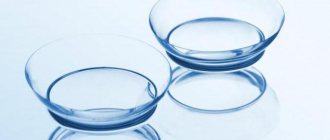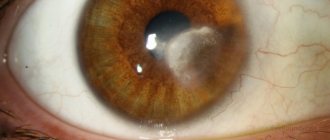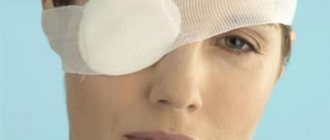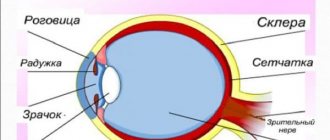With any surgical procedure, one has to deal with additional risk factors in addition to the underlying disease. One of these factors is the risk of thrombosis and thromboembolism. This is because in response to injury, the body actively produces substances that promote blood clotting. In addition, blood flow slows down during surgery. Taken together, this leads to a high likelihood of blood clots forming in the lower extremities.
Compression stockings for surgery provide elastic compression of the legs, which is considered the most effective means of preventing thromboembolism during surgical interventions. For effective use, you need to choose the right knitwear. In particular, it is very important to know how to choose the size of compression stockings for surgery and the compression class.
Impact principle
Stockings create unequal compression in different areas of the lower extremities: maximum on the ankles, minimum on the hips. Thus, conditions are created for blood flow from bottom to top - to the thigh.
Functions of compression stockings:
- preventing edema;
- support of vein walls;
- prevention of blood clots;
- stimulation of venous outflow;
- avoiding excessive stretching of the veins.
To select compression stockings, tights or socks, you need to contact a phlebologist. The doctor will take into account the available indications and select the product of the required size and class.
Recommendations for use
The main benefits of wearing compression stockings are the drainage of blood from the veins, relief from swelling and the prevention of blood clots. An increase in blood viscosity and its loss in large quantities, a decrease in pressure are symptoms observed during and after surgical operations, as well as characteristic of a number of diseases.
Thus, wearing anti-embolic underwear is prescribed for patients with diseases such as, for example, varicose veins, disorders of the cardiovascular system, diabetes mellitus, obesity, and blood clotting pathologies. The use of compression stockings is recommended for pregnant women, as well as elderly people.
Purpose of compression stockings
- During pregnancy. During this period, natural changes occur in hormonal levels, blood composition, and pelvic organs. All this contributes to the expansion of veins, swelling, thrombophlebitis and varicose veins, which can be not only on the legs, but also in the intimate area. To prevent or slow down the development of pathologies, in the 2nd and 3rd trimesters, as well as during childbirth, it is necessary to wear class I compression stockings (or II, only if prescribed by a doctor).
- After childbirth. Wearing compression hosiery in the maternity hospital (or 5-6 days) is indicated to support the correct position of the pelvic organs, the muscles of the anterior abdominal wall, and to reduce the load on the spine.
- During intense sports activities, during recovery from injuries. Athletes use knitwear because it increases endurance and performance, reduces the degree of muscle fatigue, that is, it minimizes possible harm from active sports activities and loads.
- Before, during and after surgery. Hospital (anti-embolic) knitwear is necessary to prevent thrombosis, preserve the natural position of organs, maintain lymphatic drainage and blood circulation. Compression stockings must be worn for 14 days in the postoperative period.
- For varicose veins. Compression stockings restore blood supply to the lower extremities, support arteries and veins, and prevent blood from refluxing into the veins (reflux).
- When working primarily on your feet. Knitwear will provide disease prevention, prevent swelling and discomfort in the legs.
Important! Medical compression stockings are significantly different from regular ones, which compress and improve the silhouette. You need to look at the markings: compression products are marked in mmHg. Art., and ordinary ones in den.
Why compression products provide quick relief
When you pick up compression stockings or tights, you will already understand by touch that it differs from the usual copron products of different densities. And first of all, the density of the threads and the ability to stretch.
Compression knitwear, providing good compression of soft tissues, tightens the veins, as if supporting them from the outside. Thus, the veins return to their original volumes, the valve flaps in the veins begin to work correctly, the blood flow in the vessels is normalized, which means the likelihood of developing varicose veins and thrombosis is reduced.
The therapeutic effect of compression hosiery consists of physiologically distributed compression along the leg: in the ankle area the pressure on the soft tissue is maximum, and towards the groin area it gradually decreases. A pressure difference is created, and blood circulates normally from bottom to top.
Thus, according to reviews from those who started using compression hosiery, relief from symptoms such as heaviness in the legs and swelling in the ankles occurred within 10-20 minutes.
As a result, from the first days of using knitwear, heaviness in the legs, pain, swelling, and night cramps are reduced.
THIS IS IMPORTANT: Compression products are only labeled in millimeters of mercury, indicating the degree of pressure or compression. So, if, when purchasing a product, you see on the packaging that it says: 120 den anti-varicose tights - this is not a medical product and it will not bring you any therapeutic or preventive benefits. Compression hosiery can be ordered right now in our online pharmacy. This way you can be sure that you are buying something that is truly effective.
What types of compression stockings are there?
Products are divided into two main groups:
- for prevention (15-18 mm Hg) - they can be selected without the help of a doctor (taking into account weight and height) and used at the first manifestations of spider veins;
- therapeutic (more than 18 mm Hg) - specialized medical products, which must be selected by a doctor individually, differ in classes (degrees) of compression.
Table of types of therapeutic compression hosiery by compression classes (degrees)*
Compression class (degree)
| Pressure, mmHg Art. | Application | |
| I | 18-22 | The initial stage of venous insufficiency, swelling, spider veins, enlarged veins, working while standing or sitting all the time |
| II | 23-32 | Chronic venous insufficiency, not accompanied by trophic disorders, superficial thrombophlebitis, swelling after injury, after surgery on the veins, for the prevention of embolism and thrombosis, during pregnancy with venous insufficiency |
| III | 34-46 | Complicated chronic venous insufficiency, lymphatic edema, for the prevention of deep vein thrombosis, for post-traumatic edema |
| IV | > 49 | “Elephantiasis” of the legs, deep vein thrombosis, swelling, impaired lymphatic drainage |
* Pressure ratings for grades may vary slightly between manufacturers.
Who should wear it?
The method of diagnosis or surgical intervention using a laparoscope is used not only for gynecological problems, but also for diseases of other organs located in the abdominal cavity. Therefore, wearing hospital stockings is recommended for both women and men, for whom, by the way, models are produced that correspond to the male structure of the legs.
In 100% of cases, wearing compression hosiery is necessary for people over 40 years of age, as well as in the presence of the following pathologies:
- diseases of the blood coagulation system;
- phlebeurysm;
Varicose veins
- obesity or overweight;
- chronic heart disease;
- diabetes mellitus of any type.
In some private clinics, during laparoscopy, instead of stockings, a special compression device is used, which stimulates blood flow in the legs. However, after such innovative stimulation of blood flow, doctors will still recommend wearing tight knitwear.
Terms of use
- Skin must be completely dry before putting on. Lotion or cream will not make sliding easier, but will only complicate the process.
- Compression stockings are put on in the morning, while still lying in bed, with your legs elevated.
- You need to wear knitwear all day, take it off only before going to bed.
- If the fibers are damaged, stockings lose their function. Therefore, when putting on knitwear, you need to remove jewelry from your hands, and if you have long nails, it is better to wear gloves.
- The stockings hardly stretch and are difficult to put on. Therefore, until the proper dexterity is acquired, this must be done slowly and carefully. If you rush, the knitwear may twist, causing severe discomfort.
Still have questions? Call!
St. Petersburg, Olminskogo st., 5 Single telephone number
Request a call back
Terms of wearing
Stockings are put on immediately before laparoscopy and worn for 2 weeks after it.
Hospital stockings should not be worn immediately before laparoscopic diagnosis or surgery. This should be done early in the morning, immediately after waking up, in a lying position. However, in some cases, according to indications, the doctor may ask you to wear them 2-3 days before laparoscopy.
How long to wear compression stockings after laparoscopy? After such manipulation, wearing them is indicated for 10-14 days, around the clock, and it is not recommended to remove them earlier. Long-term wear is indicated for the prevention and treatment of varicose veins in the initial stage, in the presence of bulging veins, as well as for pregnant women. In these cases, they must be removed at night. You also need to consult a specialist who will tell you whether you can continue to wear stockings purchased for laparoscopy.
Why should you wear compression stockings after laparoscopy?
If the patient understands the essence of what will happen to him on the operating table, then it will be easier for him to understand why compression stockings are needed during the operation, as well as after its completion. Laparoscopy is not an abdominal operation, which involves performing all manipulations through small punctures in the abdomen.
Since laparoscopy involves damage to the vascular walls, the body begins to actively produce substances that change the functioning of the hemostatic system. With the active formation of blood clots, there is a high probability of developing blockage of the vascular lumen, especially after removal of the uterus or laparoscopy of the fallopian tubes.
Patients also have to wear a bandage after laparoscopy. This is especially appropriate after laparoscopy of the gallbladder. An abdominal bandage resembles a bandage that is secured with Velcro. Its main task is to support the anterior wall of the peritoneum after abdominal and laparoscopic operations.
Medical knitwear is able to support blood vessels and protect them from excessive stretching. The vascular lumen narrows under the pressure exerted on the veins, and a rapid outflow of blood begins. Compression of the soft tissues of the ankle protects against severe swelling, fatigue, and muscle pain.
The use of compression bandages after surgery is an outdated technique. It is recommended to wear products that have compression functions, primarily for the prevention and treatment of varicose veins. But in clinical practice, wearing it is used to prevent edema, and with the help of such knitwear it is possible to improve local blood circulation.
A favorable prognosis may depend on varying lengths of use of such compression products. In each clinical case, how long the patient needs to wear compression stockings after laparoscopy will be advised by his attending physician or the surgeon performing the laparoscopy.
Compression stockings are divided into:
Therapeutic stockings
Experts recommend wearing it for the complex treatment of varicose veins, after traumatic or lymphatic swelling of the legs. It is worth noting that stockings from the Sigvaris brand come in two types: groin-length stockings and mid-thigh stockings.
Stockings for surgery
They are also called hospital stockings - they are produced in white color and with a hole for the foot. As the name suggests, they are used in preventive measures in hospitals and hospitals during operations to prevent blockage of blood vessels by air bubbles and blood clots (embolism). Also recommended after surgery.
Elastic bandages stand out:
Elastic bandage
This is a woven material that has the property of stretching. It is made of latex, as well as polyester fiber or cotton. Recommended for fixing joints, applying bandages, and also for quickly creating distributive pressure on the affected limb.
How long should you wear compression stockings after laparoscopy?
The length of time to wear compression hosiery is an individual concept. There are no mandatory standards in this matter, and when making a decision, the following factors are taken into account:
- type or degree of complexity of laparoscopic intervention;
- the presence of somatic diseases of various origins;
- consequences and possible complications after manipulation;
- coagulogram indicators;
- a tendency to varicose veins or a history of it;
- age category of the patient;
- bad habits (tobacco smoking, alcohol abuse).
The average duration of wearing medical compression products is about a month (sometimes longer) for laparoscopic operations. If the operation was related to phlebology, then how long to wear stockings will be determined individually and this period may be extended.
Based on the type of laparoscopic surgery, the doctor will tell the patient how long to wear compression stockings in his particular case:
- gynecology - up to 4 weeks;
- nephrology - up to 5 days;
- phlebology - up to 20 days;
- gastroenterology/hepatology - up to 1.5 weeks.
In the first week after surgery, the type of stockings used is changed. In the next 24 hours after laparoscopy, you should absolutely not take off your stockings. And if phlebological laparoscopy was performed, then the restriction applies to 72 hours. The patient's care provider, the doctor, will tell you when they can be removed.
Compression stockings are important products for a favorable course and outcome of laparoscopy. But the attending physician must prescribe them and recommend all the necessary parameters. If the patient adheres to all medical recommendations, he can count on a favorable prognosis.











